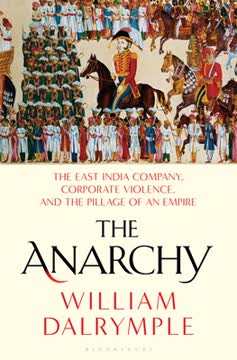Key Takeaways
1. India: A Forgotten Civilizational Engine
Indian learning, Indian religious insights and Indian ideas are among the crucial foundations of our world.
Historical Misconceptions. For too long, India's role as a major civilizational center has been overlooked, overshadowed by the focus on Greece and Rome in the West, and China in the East. This is partly due to colonial-era biases and a tendency to study history in separate regional silos.
India's influence:
- India was a major exporter of its culture, ideas, and technologies for over a millennium.
- Indian religions, philosophies, sciences, and arts spread across Asia, shaping the lives of over half the world's population.
- Crucial mathematical concepts like zero and the decimal system originated in India, forming the basis of our modern numerical system.
Reclaiming India's place. It's time to recognize India's profound and transformative impact on world history, placing it on par with other great ancient civilizations. This requires a re-evaluation of historical narratives and a more integrated approach to studying global connections.
2. The Golden Road: A Maritime Superhighway
Thanks to the winds of the Asian monsoon, India lies at the centre of a great network of navigable sea roads and maritime trade routes.
Monsoon winds as a catalyst. The predictable monsoon winds of the Indian Ocean enabled Indian sailors to travel vast distances, creating a maritime superhighway that connected India with Africa, the Middle East, and Southeast Asia. This network was far more efficient than overland routes.
Trade routes:
- Westward routes connected India to the Red Sea, Egypt, and the Roman Empire.
- Eastward routes linked India to Southeast Asia and eventually China.
- The sea routes were faster, cheaper, and safer than overland routes.
Economic power. The trade along the Golden Road brought immense wealth to India, making it a major economic hub. Roman writers lamented the drain of gold to India, which they called "the sink of the world's most precious metals." This wealth fueled the growth of Indian cities and the patronage of art and learning.
3. Buddhism's Birth and Global Spread
From this moment of revelation, the Buddha wandered through northern India teaching his fundamental ideas that everything is impermanent and that desire brings only the most fleeting of pleasures.
The Buddha's teachings. Siddhartha Gautama, the Buddha, sought a path to end human suffering. He taught the Middle Path, a way of moderation between self-indulgence and self-mortification, and emphasized the importance of compassion, detachment, and meditation.
Ashoka's role:
- Emperor Ashoka's conversion to Buddhism led to its rapid spread across India and beyond.
- Ashoka sent missionaries to Sri Lanka, Southeast Asia, and even the Hellenistic world.
- He also built stupas and monasteries, promoting Buddhism as a pan-Indian religion.
Buddhism's journey. Buddhism spread through trade routes, carried by merchants and monks. It transformed cultures in Tibet, China, Korea, and Japan, adapting to local contexts while retaining its core principles.
4. The Rise of the Indosphere
For a millennium and a half before then, from about 250 bce to 1200 CE, India was a confident exporter of its own diverse civilisation, creating around it an empire of ideas which developed into a tangible ‘Indosphere’ where its cultural influence was predominant.
A cultural empire. India's influence extended far beyond its political borders, creating a vast "Indosphere" where Indian ideas, art, languages, and religions were dominant. This was achieved not through conquest but through cultural allure and sophistication.
Sanskrit's role:
- Sanskrit became the lingua franca of much of Asia, influencing place names and languages.
- Indian epics like the Ramayana and Mahabharata were adopted and adapted in Southeast Asia.
- Indian gods, rituals, and temples became central to the religious life of the region.
A two-way street. While India was a major exporter of culture, it also absorbed and transformed ideas from other civilizations. This created a dynamic and ever-evolving cultural landscape.
5. The Power of Patronage: Monasteries and Merchants
The monasteries acted as urban enclaves in the countryside where prosperous Buddhist farmers could borrow money from the monks and invest it in family trading voyages.
Monasteries as centers of learning and commerce. Buddhist monasteries were not just places of spiritual retreat but also centers of learning, economic activity, and international trade. They acted as banks, lenders, and trading hubs.
Merchants as patrons:
- Wealthy merchants were major patrons of Buddhist monasteries, funding their construction and decoration.
- Merchants also used monasteries as safe havens and sources of credit for their trading voyages.
- The close relationship between merchants and monasteries facilitated the spread of Buddhism along trade routes.
A symbiotic relationship. The monasteries and merchants formed a symbiotic relationship, with each supporting the other's growth and prosperity. This partnership was crucial for the spread of Buddhism and Indian culture across Asia.
6. The Transformation of China by Indian Ideas
For most of late medieval and modern history, India was on the receiving end of a great deal of cultural influence from beyond its borders.
A two-way street. While India was a major exporter of culture, it also absorbed and transformed ideas from other civilizations. This created a dynamic and ever-evolving cultural landscape.
Buddhism's impact on China:
- Buddhism transformed Chinese art, architecture, literature, and philosophy.
- Chinese monks traveled to India to study Buddhist texts, bringing back new ideas and practices.
- The Tang dynasty, in particular, saw a flourishing of Buddhist art and culture.
A unique relationship. The relationship between India and China was unique in that it was not based on conquest but on a mutual exchange of ideas and culture. This exchange had a profound and lasting impact on both civilizations.
7. The Great Library of Nalanda: A Beacon of Knowledge
Above all, he described the glories of Nalanda’s library, which he regarded as the greatest repository of knowledge in the world.
Nalanda as a center of learning. The Buddhist university of Nalanda was one of the greatest centers of learning in the ancient world, attracting scholars from across Asia. It was a place of intense study and intellectual exchange.
The library's significance:
- Nalanda's library was a vast repository of knowledge, containing texts on a wide range of subjects.
- Monks like Xuanzang spent years studying and copying manuscripts at Nalanda, bringing them back to China.
- The library's influence extended far beyond India, shaping the intellectual landscape of Asia.
A lost treasure. The destruction of Nalanda's library represents a major loss for world history. Its rediscovery and study are crucial for understanding the intellectual achievements of ancient India.
8. The Enduring Legacy of the Indosphere
The roots of these ‘nine figures of the Indias’ were first written down in the Brahmi script in third-century bce Bihar, at the time of the Emperor Ashoka. This is something Europeans mostly erased from their memory in recent centuries. It is something they need to retrieve from oblivion today.
A lasting impact. The Indosphere's influence continues to be felt today, in the religions, languages, art, and cultures of Asia. Indian ideas have shaped the world in profound and often overlooked ways.
Key legacies:
- The decimal system and the concept of zero, which are essential for modern mathematics and science.
- The spread of Buddhism, which has become one of the world's major religions.
- The rich artistic and literary traditions of South and Southeast Asia, which continue to inspire and captivate.
A call for recognition. It's time to acknowledge India's central role in world history and to recognize the enduring legacy of the Indosphere. This requires a more inclusive and integrated approach to studying the past and a greater appreciation for the interconnectedness of human civilizations.
Last updated:
FAQ
What's The Golden Road: How Ancient India Transformed the World about?
- Cultural Influence: The book explores how ancient India significantly influenced cultures, religions, and economies across Asia from 250 BCE to 1200 CE, highlighting the "Indosphere" where Indian ideas were predominant.
- Historical Figures and Events: It delves into the lives of key figures like Xuanzang and Ashoka, intertwining their journeys with broader historical contexts of trade and cultural exchange.
- Trade and Economic Power: Emphasizes India's role as a major economic hub, particularly through maritime trade routes that connected it to the Roman Empire and beyond.
Why should I read The Golden Road: How Ancient India Transformed the World?
- Rich Historical Narrative: William Dalrymple presents a compelling narrative combining history, travel, and cultural studies, making it engaging for readers interested in interconnected civilizations.
- Insight into Cultural Exchange: Provides valuable insights into how cultural exchanges shaped societies, particularly in the context of Buddhism and Hinduism's spread across Asia.
- Understanding Modern Context: Examines historical influences to help readers understand contemporary cultural and religious landscapes in Asia.
What are the key takeaways of The Golden Road: How Ancient India Transformed the World?
- India as a Cultural Exporter: Illustrates India's role as a confident exporter of its civilization, influencing regions from Afghanistan to Japan through trade and the allure of Indian ideas.
- Role of Buddhism: Highlights Buddhism's transformative power, particularly under rulers like Ashoka, in spreading Indian culture and philosophy.
- Economic Dynamics: Discusses economic relationships between India and other regions, emphasizing how trade shaped cultural exchanges.
What are the best quotes from The Golden Road: How Ancient India Transformed the World and what do they mean?
- “The day is not sufficient for asking and answering profound questions.”: Reflects the intellectual vibrancy of Nalanda, underscoring the importance of inquiry and dialogue in knowledge pursuit.
- “Buddhism was to be a teacher of the Arab world, and hence Mediterranean Europe too.”: Highlights Buddhism's far-reaching influence on global intellectual traditions and cultural interconnectedness.
- “The Golden Road linking all these diverse forms and geographies into a single cultural unit.”: Encapsulates the book's central theme of India's cultural influence creating a vast network of interconnected societies.
How did trade influence the spread of Indian culture according to The Golden Road: How Ancient India Transformed the World?
- Maritime Trade Routes: Indian merchants used monsoon winds to establish trade routes across the Indian Ocean, facilitating the exchange of goods and ideas.
- Economic Prosperity: Wealth from trade allowed Indian culture, particularly Buddhism and Hinduism, to flourish and spread.
- Cultural Exchange: Trade led to cosmopolitan centers where diverse cultures interacted, integrating Indian ideas into local traditions.
What is the Indosphere as described in The Golden Road: How Ancient India Transformed the World?
- Cultural Sphere: Refers to the vast cultural influence of India across South, Central, and Southeast Asia, creating a shared cultural heritage.
- Historical Context: From 250 BCE to 1200 CE, India was a dominant cultural force, exporting its civilization rather than merely receiving influences.
- Legacy: Emphasizes the historical interconnectedness of Asian cultures and the lasting impact of Indian civilization on neighboring regions.
How does The Golden Road: How Ancient India Transformed the World address the spread of Buddhism?
- Buddhism's Adaptation: Discusses how Buddhism adapted to local cultures as it spread, merging with indigenous beliefs in regions like China and Southeast Asia.
- Influence of Monastic Communities: Highlights the role of monastic communities in disseminating Buddhist teachings and practices.
- Cultural Artifacts: Includes discussions of art and architecture, such as stupas and sculptures, reflecting the syncretism of Buddhist and local artistic traditions.
What role did Ashoka play in the spread of Buddhism as discussed in The Golden Road: How Ancient India Transformed the World?
- Patron of Buddhism: Ashoka promoted Buddhism after his conversion, aligning his edicts with Buddhist principles of non-violence and moral governance.
- Missionary Efforts: Sent missionaries to regions like Sri Lanka and Central Asia, helping establish Buddhism as a major religion beyond India.
- Cultural Legacy: His reign marked a turning point for Buddhism, transforming it from a local tradition into a global faith.
How did ancient Indian trade influence Southeast Asia according to The Golden Road: How Ancient India Transformed the World?
- Economic Growth: Indian trade brought wealth and prosperity to Southeast Asian kingdoms, leading to urbanization and trade hubs.
- Cultural Exchange: The influx of Indian merchants and ideas led to the adoption of Hinduism and Buddhism in Southeast Asia.
- Artistic Influence: Indian artistic styles and architectural techniques were adopted in Southeast Asia, influencing temple and sculpture construction.
How does The Golden Road: How Ancient India Transformed the World explore the concept of cultural syncretism?
- Merging of Traditions: Illustrates how different cultures blended their traditions, particularly through Buddhism adapting to local customs.
- Artistic Expressions: Discusses how sculpture and painting reflect syncretism, showcasing the fusion of Indian and local styles.
- Philosophical Exchanges: Emphasizes philosophical dialogues that emerged, leading to new interpretations and practices within Buddhism and other belief systems.
What specific historical events does The Golden Road: How Ancient India Transformed the World cover?
- Pallava and Chola Dynasties: Details cultural and economic revival during their reigns, highlighting contributions to art and architecture.
- Rise of the Khmer Empire: Explores its establishment and adoption of Indian cultural elements, focusing on monumental temples like Angkor Wat.
- Mongol Invasions: Discusses the impact on the Indosphere, disrupting trade networks and leading to cultural shifts.
How does The Golden Road: How Ancient India Transformed the World connect ancient history to modern times?
- Cultural Legacy: Draws connections between ancient cultural exchanges and their lasting impacts on contemporary societies.
- Historical Narratives: Emphasizes how understanding historical interactions provides insights into current cultural dynamics.
- Global Perspective: Encourages viewing history through a global lens, recognizing the interconnectedness of cultures throughout time.
Review Summary
The Golden Road receives mostly positive reviews, praised for its engaging storytelling and extensive research on India's historical influence. Readers appreciate Dalrymple's vivid descriptions and the book's focus on India's contributions to mathematics, religion, and culture. Some criticize potential biases and overstatements, while others find it eye-opening. The book's scope and depth impress many, though some feel certain sections could be more concise. Overall, it's considered an important work highlighting India's often overlooked impact on world history.
Similar Books
Download PDF
Download EPUB
.epub digital book format is ideal for reading ebooks on phones, tablets, and e-readers.









